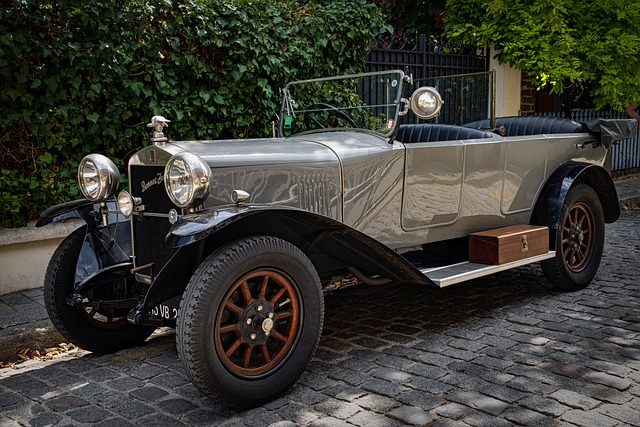Hybrid vehicles incorporate both internal combustion engines and electric propulsion systems, with advanced car batteries enabling seamless transitions between these power sources. The most common types of batteries in hybrids are Nickel Metal Hydride (NiMH) and Lithium-ion (Li-ion), the latter now predominantly used due to their lighter weight, higher energy density, and longer lifespan compared to NiMH. Car batteries consist of an anode, cathode, electrolyte, and separator, with the battery management system (BMS) overseeing charge state, temperature, health monitoring, and safety. Lead-acid batteries are also significant, especially for starting, lighting, and ignition (SLI) systems, and are used in hybrid electric vehicles (HEVs) for energy management, complementing the internal combustion engine. Both NiMH and lithium-ion car batteries are pivotal in advancing sustainable transportation, offering high energy density, durability, and environmental benefits, while ongoing advancements in lithium-ion technology further enhance safety, capacity, and efficiency, solidifying their role in the future of eco-friendly vehicles.
Exploring the heart of eco-friendly mobility, this guide demystifies the various types of hybrid car batteries pivotal in powering tomorrow’s vehicles. From the traditional lead-acid to the cutting-edge lithium-ion, understand each battery’s role and their impact on performance and sustainability. Dive into the world of nickel metal hydride (NiMH) alternatives as well, all within a comprehensive overview tailored for those curious about the technology behind their green commute.
- Understanding Hybrid Car Batteries: Types and Components
- Lead-Acid Batteries: The Traditional Power Source
- Nickel Metal Hydride (NiMH) Batteries: A Greener Option for Hybrids
- Lithium-Ion Batteries: The Future of Hybrid Vehicle Propulsion
Understanding Hybrid Car Batteries: Types and Components

Hybrid vehicles integrate both an internal combustion engine and an electric propulsion system, relying on a sophisticated hybrid car battery to facilitate smooth operation between these two power sources. Understanding the types and components of these batteries is crucial for maintaining optimal performance and longevity. There are primarily two types of batteries used in hybrids: Nickel Metal Hydride (NiMH) and Lithium-ion (Li-ion). NiMH batteries were commonly found in earlier hybrid models due to their high energy density, durability, and ability to operate in a wide range of temperatures. However, Li-ion batteries have become the preferred choice due to their lighter weight, higher energy density, and longer lifespan, making them more suitable for modern hybrid vehicle applications.
The construction of these batteries involves several key components, including the anode, cathode, electrolyte, and separator. The anode and cathode are responsible for the flow of electrons during discharge and charge cycles. The electrolyte is a crucial medium that allows ion movement between the anode and cathode. The separator physically divides these components while allowing ions to pass through, ensuring safe operation and preventing the anode and cathode from coming into direct contact. Additionally, the hybrid car battery system includes a battery management system (BMS) that monitors and manages the battery’s state of charge, temperature, health, and safety. This sophisticated technology is essential for the efficient use of energy in hybrid vehicles, contributing to better fuel economy and reduced emissions. Car owners should be aware of the importance of regular maintenance and proper charging practices to ensure their hybrid car battery operates at peak performance.
Lead-Acid Batteries: The Traditional Power Source

Lead-acid batteries have historically served as the foundational power source for a wide array of applications, including the humble hybrid car battery. Despite the advent of more advanced technologies, these batteries remain a staple in various sectors due to their maturity and proven reliability in energy storage solutions. In the realm of automotive engineering, lead-acid batteries have long been the go-to option for starting, lighting, and ignition (SLI) functions within conventional vehicles. Their robust design and ability to handle a multitude of charge-discharge cycles make them suitable for hybrid electric vehicles (HEVs), where they assist in powering electric motors, regenerative braking systems, and managing energy flow between the internal combustion engine and the electrical subsystems. While modern hybrids often utilize more sophisticated nickel-metal hydride (NiMH) or lithium-ion batteries for their main energy storage due to higher energy density and efficiency, lead-acid batteries continue to be used in auxiliary capacities because of their cost-effectiveness and the well-established infrastructure supporting their maintenance and recycling. Understanding the role of these traditional car batteries is crucial for anyone interested in the evolution of hybrid vehicle technology and their environmental impact.
Nickel Metal Hydride (NiMH) Batteries: A Greener Option for Hybrids

When considering hybrid vehicle powertrains, the role of the car battery is pivotal. Among the various types available, Nickel Metal Hydride (NiMH) batteries stand out as a particularly eco-friendly option for hybrid electric vehicles (HEVs). NiMH batteries offer a high energy density and are known for their durability and longevity, making them suitable for the frequent charging and discharging cycles typical of HEVs. Unlike older technologies such as lead-acid batteries, which are less efficient and have a shorter lifespan, NiMH batteries are rechargeable without any significant drop in performance over time. This characteristic, coupled with their relatively lower environmental impact during production and disposal, positions them as a greener alternative for environmentally conscious consumers. Additionally, NiMH batteries boast a higher energy density compared to nickel-cadmium (NiCd) cells, which means they can store more energy in the same physical space, thereby enhancing the vehicle’s overall efficiency and range. In summary, the adoption of NiMH batteries in hybrid vehicles represents a significant step towards sustainable transportation, offering a balance between performance, longevity, and environmental impact.
Lithium-Ion Batteries: The Future of Hybrid Vehicle Propulsion

Hybrid vehicles have become a staple in the modern transportation landscape, offering a blend of traditional internal combustion engine functionality and electric propulsion. At the heart of this innovative technology lies the car battery, which plays a pivotal role in the vehicle’s performance and efficiency. Lithium-Ion batteries stand out as a leading choice for hybrid cars due to their high energy density, long lifespan, and ability to quickly recharge. These advanced batteries not only enhance the driving range but also provide a more responsive and smoother driving experience. As the demand for cleaner and more sustainable transportation options grows, lithium-ion technology continues to advance, offering greater capacity and safety features. This makes Lithium-Ion car batteries an increasingly attractive option for those looking to invest in hybrid vehicles that are not only environmentally friendly but also equipped with cutting-edge energy storage solutions. The evolution of Lithium-Ion car batteries indicates a clear trajectory towards a future where hybrid propulsion becomes more efficient and mainstream, signaling a significant shift away from reliance on fossil fuels. As the automotive industry moves forward, the role of these high-performance batteries will undoubtedly become even more critical in shaping the future of transportation.
When considering the heart of hybrid vehicle propulsion, understanding the various types of car batteries available is crucial. This guide has illuminated the distinct characteristics and advancements of lead-acid, nickel metal hydride (NiMH), and lithium-ion batteries, each playing a pivotal role in the evolution of green transportation. While lead-acid batteries have historically powered hybrid vehicles, their environmental impact and reduced efficiency make them less desirable compared to the more modern alternatives. NiMH batteries offer a cleaner, yet still somewhat limited, option that has served as a stepping stone towards the current front-runner: lithium-ion batteries. These high-capacity powerhouses represent the future of hybrid car propulsion, offering superior energy density and longevity, making them an optimal choice for the environmentally conscious driver. In conclusion, as technology advances, the selection of car batteries will only improve, ensuring that hybrid vehicles continue to be a sustainable and efficient choice for eco-friendly transportation.
